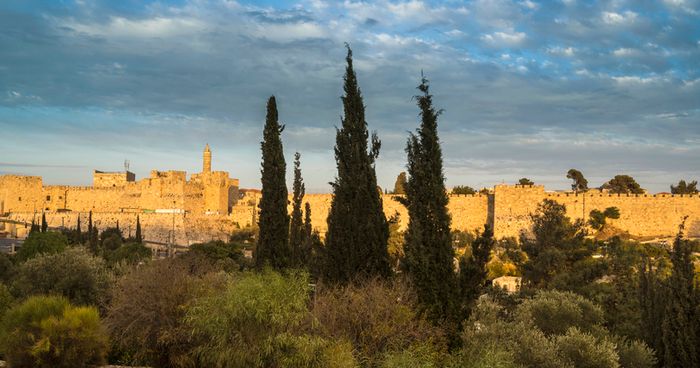Does the field of blood still exist
Updated September 30, 2024.

What is the Field of Blood?
The Field of Blood, also known as Akeldama is located near the southern part of Jerusalem.
Akeldama is referenced in the New Testament and is believed to be the location where Judas Iscariot, after betraying Jesus, ended his life. The location still exists today and is historically tied to Christian traditions, serving as a poignant reminder of Judas's remorse and the events leading to his death.
2. What Happened At The Field of Blood?
According to the Bible, Akeldama became infamous as the site where Judas Iscariot met his tragic end.
Judas was/is one of the most important figures in the story of Jesus, and we know that Jesus trusted him from several bible passages. After betraying Jesus for 30 pieces of silver, Judas was overcome with guilt thus in attempt to relieve the guilt he attempted to return the money to the priests. The priests refused his 'Blood Money' coins so Judas threw the coins into the temple and then took his own life.
For hundreds of years, theologists have debated why the betrayal took place, with some even arguing that it was part of the destiny of Christ; an important one at that.
According to the Gospel of Matthew, Judas Iscariot hanged himself in a field. However, the rope broke, Judas fell and this caused his abdomen to burst open on the rocky ground. Because of this tragic event, the field was known as Hakeldama, which translates to "the Field of Blood."
The priests used the returned silver to purchase the field as a burial ground for foreigners, fulfilling a prophecy from the Old Testament.
What We Know About Judas.
Judas Iscariot was one of the twelve original disciples of Jesus. His role was significant, as he was the treasurer of the group.
1. Peter (Simon Peter)
2. James (the son of Zebedee)
3. John
4. Andrew
5. Philip
6. Bartholomew (Nathanael)
7. Matthew (Levi)
8. Thomas (Didymus)
9. James (the son of Alphaeus)
10. Thaddaeus (Jude, the son of James, or Judas, the son of James)
11. Simon the Zealot
12. Judas Iscariot
In Hebrew, "Judah" translates roughly from Greek as "Praise," "Let God be praised," or "God is thanked." This was a common name in the first century AD, used to honor Judas Maccabeus, and was used for other characters in the New Testament.
He came from Iscariot and used the town as his surname. Interestingly enough, he is the only apostle who identifies by his origin: A town believed to be located in Judea, south of Jerusalem. Some records claim that he was Jesus's most trusted disciple, and yet there is also evidence that Jesus knew one of his disciples would betray him.
3. Where is the Field of Blood Located?
Throughout history, different writers and scholars have mentioned Akeldama, not all of them agree on the location. The Field of Blood, also known as Akeldama is said to be located near the southern part of Jerusalem in the Hinnom Valley.
4. Does the Field of Blood Still Exist?
Yes, the location of the Field of Blood still exists today. Although as mentioned above its exact historical location is unclear. The site remains a somber and historically significant area in Jerusalem. While the Field of Blood no longer functions as a burial ground, Akeldama has become a site of interest for Christian pilgrims seeking to connect with biblical history
5. Other Spiritual Places in Israel, The Holy Land You Should Visit:
Israel offers an unparalleled opportunity for a Christian pilgrimage, with; Jerusalem, Nazareth, and Bethlehem standing out as must-visit biblical sites. Each one of these special, sacred and historical destinations holds profound spiritual significance and allows you to experience a deep connection to the life and ministry of Christ.
In conclusion, The Field of Blood, or Akeldama, offers an intriguing yet significant insight into a pivotal moment in Christian history. As the site of Judas Iscariot's tragic end and the subsequent purchase of the field as a burial ground, it stands as a powerful symbol of betrayal, guilt, and prophecy. While the exact location of The Field of Blood may be debated, its historical and spiritual importance remains undeniable. For those journeying through the Holy Land exploring The Field of Blood, along with other sacred sites such as Jerusalem, Nazareth, and Bethlehem, enriches one's spiritual journey and connection to the profound stories that shaped Christian faith.








